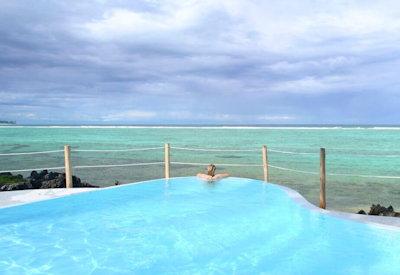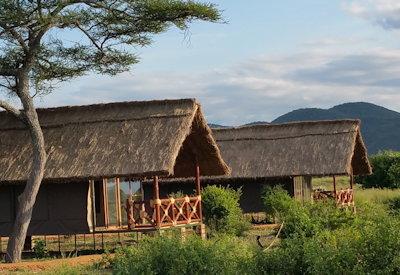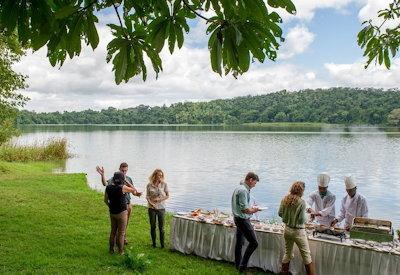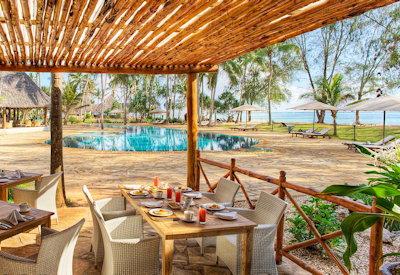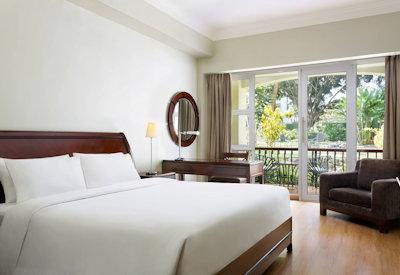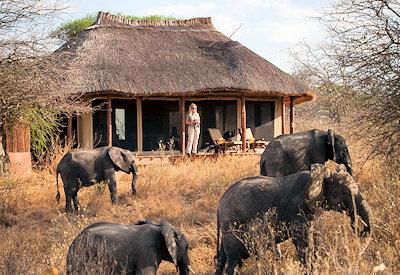The new addition to the sengi family was first spotted in 2005 when Francesco Rovero of the Trento Museum of Natural Sciences in Italy set up motion-sensing cameras in the forests of Tanzania's Eastern Arc Mountains. A photograph appeared of a creature with a long snout that no one could identify. It was only a year later that a team expedition laid traps to catch live specimens of the creature they suspected was a new species. The traps they brought along were not really big enough for this giant among elephant shrews, so the team had to rely on the traditional hunting snares instead.
They finally managed to capture 4 of the animals and could confirm that this was indeed a new species of elephant shrew. The elephant-shrews are mammals of an order called Macroscelidea; from the Greek meaning "long legs". Though they have some resemblance, they are actually not related to the shrew – a small mouse-like animal found in many parts of the world. Scientists now prefer using the African name "sengi" to prevent confusion with shrews.
Sengi forms their own order of mammal and get their common name from their long elephant-like snout which they use to flick up tasty insects. Curiously, genetics has shown that sengi shares a common ancestor (estimated to have lived about 100 million years ago) with golden moles, the aardvark, manatees, dugongs, hyraxes... and their namesake elephants!
Rhynchocyon udzungwensis, or grey-faced sengi, is the first new species of sengi to be discovered in more than a century. It is much larger than the other species, weighing in at 700g and measuring about 30cm in length. It has a distinctive grey colouring on its face and a black lower rump.
There is a lot of pressure on the forests from surrounding villages and the sengi is known to be on the menu of local tribespeople. The creature will probably join the endangered species list but is probably saved from extinction by its remote location in the heart of the mountain forests.
Udzungwa Mountains National Park
This exciting new species discovery was made in the remote Udzungwa Mountains National Park, a 1990 km2 area in south-central Tanzania. Lohomero, its highest peak lies at 2,576 metres above sea level.
The name Udzungwa probably originates from a distortion of the name of one of the tribes living on the slopes of the Mountains, "wadsungwa".
These mountains form part of the Eastern Arc, a mountain chain of isolated mountains running through Tanzania and southern Kenya. They are covered in spectacular forests which receive a lot of rain from the prevailing east wind carrying humid air from the Indian Ocean. The eastern arc is a "World Biodiversity Hotspot" which excites scientists with a large number of plant and animal species endemic to this part of the world.
The surrounding lands have been deforested by the pressure and needs of the people living in inland Tanzania. And so, the mountain forests have become islands in-between the arid heavily populated savannah land. These forest islands are home to over 30% of Tanzania's plant and animal species. The much loved African violet, which graces homes all around the world, originates in these forests.
The region harbours at least 100 species of mammals, birds, amphibians, and other vertebrates found nowhere else on earth, making it one of the densest concentrations of endemic species.
And ... the grey-faced sengi is the latest addition to the list of creatures known to call Udzungwa home.
Kuro Tarangire
Kuro Tarangire, a thatch and tented camp is set amid a grove of Acacia and Kigelia trees right on the banks of the Tarangire River within the Tarangire National Park itself.
Kuro is for those that desire the African bushveld and all she offers far away from maddening crowds, this truly is a special place.
Matemwe Lodge
Matemwe Lodge, Zanzibar, offers accommodation consisting of 12 beautiful bungalows built from local materials and surrounded by a beautiful beach.
Each lodge suite has a private veranda with hammocks and couches overlooking the Matemwe beach and Indian Ocean.
Tarangire Simba Lodge
Tarangire Simba Lodge located within Tanzania's amazing Tarangire National Park is an attractive option for those interested in experiencing all that this region has to offer.
Tarangire Simba Lodge is ideal for small groups, couples and families.
Arusha Serena Hotel
Arusha Serena Hotel is surrounded by coffee plantations and rolling hills, on the shores of Lake Duluti, near to Arusha, the gateway town of Tanzania's spectacular national parks.
The perfect hotel in Arusha to relax before or after your Tanzania or East Africa Safari.
Bluebay Beach Resort
Bluebay Resort is situated on the finest wide, white, sandy beach on the island of Zanzibar, located on the East Coast in an area known as Kiwengwa, the resort is only 35 minutes drive from the town and the airport on a tarmac road.
A lodge resort that offers Wi-Fi, a laundry service, room service, and is perfect for families and romantics alike.
Four Points By Sheraton Arusha
The Arusha Hotel is set in beautifully landscaped gardens with all the amenities and luxury for the discerning traveler.
The tropical gardens are home to many birds and exotic plants, an ideal setting for wedding receptions and outdoor functions. Located in the heart of downtown Arusha, close to bars and restaurants.
Little Oliver's Camp
Little Olivers Camp, with just five tented suites in the heart of Tarangire National Park, offers up an intimate and personal experience for small groups or families.
Little Olivers is small enough for it to be called your own personal safari camp in the Tarangire.
Olakira Migration Camp
Olakira Camp, with her nine intimate en-suite traditional safari tents, follows the massive herds of wildebeest to two spectacular locations in the north and south of the Serengeti National Park.
Expert Serengeti and Maasai safari guides and trackers with specialist knowledge showcase all that is one of the natural wonders of the World.


